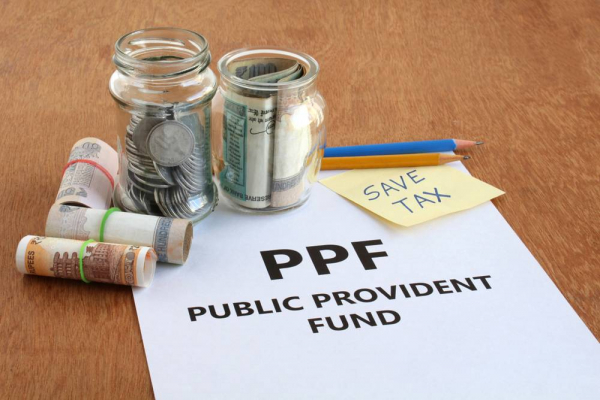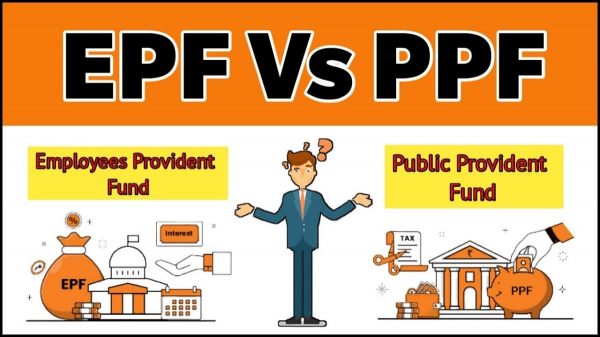What is the difference between EPF and PPF?
- by B2B Desk 2024-05-20 08:17:51
The Indian government has implemented various savings schemes to promote the habit of saving among the Indian population. These initiatives also assist in developing a mindset of careful money management among the populace. A saving program known as Provident Fund (PF) is an example of this. India has mandatory savings programs as well as optional savings programs.
Employees Provident Fund falls into the first category, whereas Public Provident Fund falls into the second category. EPF and PPF have some distinctions. Before getting into the specifics of how they differ, it is crucial to understand each chart on its own.
What is the Public Provident Fund Scheme

The Public Provident Fund (PPF) is a savings scheme that you can opt for if you are a resident of India. However, if you have opened a PPF account while living in India, and you have moved to another country, you are allowed to keep your PPF account. As your PPF account balance grows to the pre-selected amount and compounding feature, you can earn more interest from the interest. This scheme is offered by nationalized banks the most famous of which is State Bank of India under the supervision of the Government of India. The current interest rate for PPF deposits is 7.1%, but is subject to change due to government regulations. Unlike EPF, PPF is not managed by EPFO, but by the banks offering the scheme.
What is the Employee Provident Fund Scheme

EPF Scheme is a savings scheme provided to all Indian employees who receive a salary and work in either the public or private sectors. This scheme is not voluntary and is managed by EPFO (Employees Provident Fund Organisation) on behalf of the Government of India. After an employee's EPF account is created, the employee has the option to confirm their account using the EPFO's online portal.
An Employment Insurance Plan is a retirement and savings plan that aims to establish a safety net organization for individuals during their retirement years. In this plan, both employees and employers allocate a portion of their income to the employees' EPF accounts on a monthly basis. Companies with a workforce of at least 20 individuals are also qualified for EPF and must adhere to the labor laws and regulations in India.
Encouraging individuals to contribute part of their income to their retirement savings helps improve their financial preparedness for the future. Specifically, the task undertaken by the EPFO sets apart the PPF and EPF. Nevertheless, an EPF account serves a purpose beyond just money-saving. He receives interest of 8.15% per year, and this interest amount will double (if repayment is not made early).
Difference Between EPF and PPF
.jpg)
EPF vs PPF- Which One to Choose?
EPF and PPF are both widely preferred investment choices for individuals aiming to safeguard their financial future. Understanding the key attributes of each graph can assist in making a well-informed choice.
Employees Provident Fund (EPF) is specially designed for salaried employees. This acts as a savings plan where a portion of your salary is deducted and you plan for your retirement. The advantage of EPF is that there is no need to keep the income on hand as the withdrawal process is automatic. In case of any unforeseen circumstances like unemployment, you can withdraw money from your EPF account.
Public Provident Fund (PPF), on the other hand, is an investment discretionary option with a tenure of up to 15 years. This allows people to contribute simple amounts towards building a retirement corpus. PPF also has the advantage of allowing you to take a loan against the deposited amount if required. Additionally, the PPF calculation period is initially 15 years but can be extended up to 5 years.
Before choosing between EPF and PPF, it is important to carefully assess your financial objectives, risk appetite, and preferences. Consider factors such as ease of delivery, ability to repay, interest rate, and specific benefits tailored to your needs.
FAQs
Q. Which is better PPF or EPF?
A. Both are safe due to statutory backing. But EPF is riskier due to equity exposure in it. The EPFO declares the EPF rate every year based on the returns of the EPF corpus. The current EPF rate is 8.25% while the current PPF rate is 7.1%.
Q. Is EPF tax free?
A. Withdrawals after retirement are exempt from tax, provided the employee has completed five years of continuous service. No TDS: There is no Tax Deducted at Source (TDS) for EPF withdrawals after retirement.
Q. What is the limit of EPF per year?
A. 7.5 Lakhs annually. Interest on employee contributions surpassing Rs. 2.5 Lakhs is subject to taxation. EPF interest for government employees remains tax-free up to Rs. 5 Lakhs annually.
Q. Is PPF tax-free?
A. Deposits to a PPF account are exempted from the taxation up to a maximum of Rs. 1.5 lakh in a FY under Section 80C of the Income Tax Act, 1961. A Tax saving fixed deposit has a higher interest-earning potential than savings accounts. The second exemption is on the interest earned from your PPF deposits.
Also Read: Top 5 best small cap mutual funds in 2024

POPULAR POSTS
Best Silver Investment Platforms for 2025: From CFDs to Digital Vaults Explained
by Shan, 2025-10-23 12:22:46
Best Investment Plans in India for 2025: A Complete Guide to Grow and Protect Your Wealth
by Shan, 2025-09-18 10:20:46
Which venture capital firms are the most active in funding Indian startups in 2025
by Shan, 2025-08-06 10:42:11
Top 5 Apps to Buy Digital Gold in India (2025): Safe, Simple & Secure
by Shan, 2025-08-01 10:24:51
10 Highest Dividend Yield Stocks in August 2025
by Shan, 2025-07-28 09:31:02
Exchange-Traded Fund (ETF): A Practical Guide to Smart Investing
by Anmol Chitransh, 2025-04-17 10:18:20
The Ultimate Guide to Commodity Trading: Strategies, Risks, and Opportunities
by Anmol Chitransh, 2025-04-02 07:06:01
RECENTLY PUBLISHED

Loan EMIs to Drop as RBI Slashes Repo Rate - Full MPC December 2025 Highlights
- by Shan, 2025-12-05 11:49:44

The Agentic Revolution: Why Salesforce Is Betting Its Future on AI Agents
- by Shan, 2025-11-05 10:29:23

Pine Labs IPO 2025: Listing Date, Grey Market Premium, and Expert Outlook
- by Shan, 2025-11-05 09:57:07

Top 10 Insurance Companies in India 2026: Life, Health, and General Insurance Leaders Explained
- by Shan, 2025-10-30 10:06:42

OpenAI Offers ChatGPT Go Free in India: What’s Behind This Big AI Giveaway?
- by Shan, 2025-10-28 12:19:11





 Subscribe now
Subscribe now 